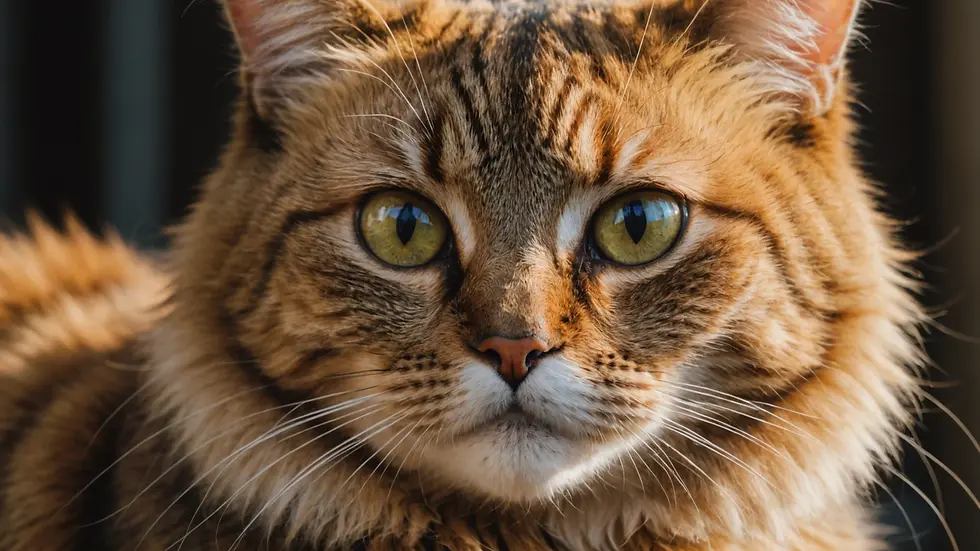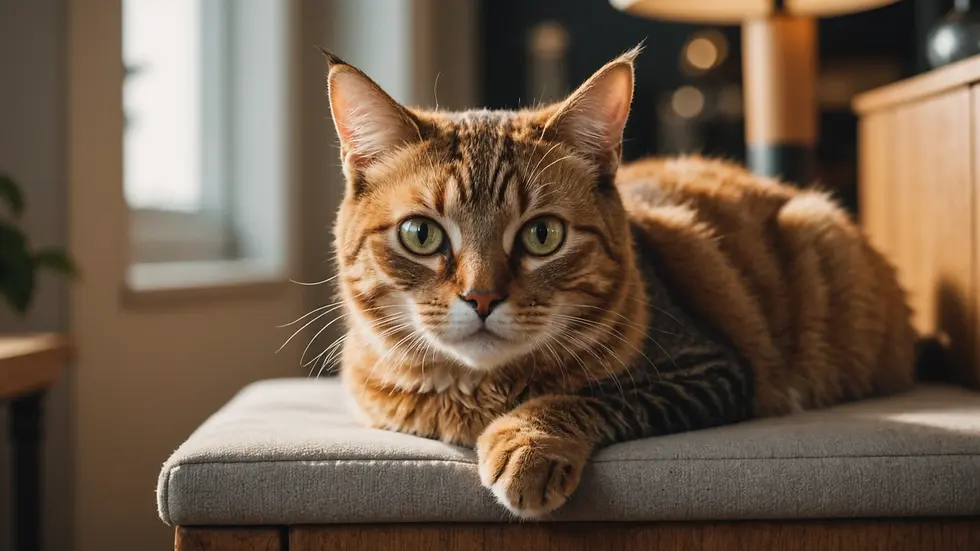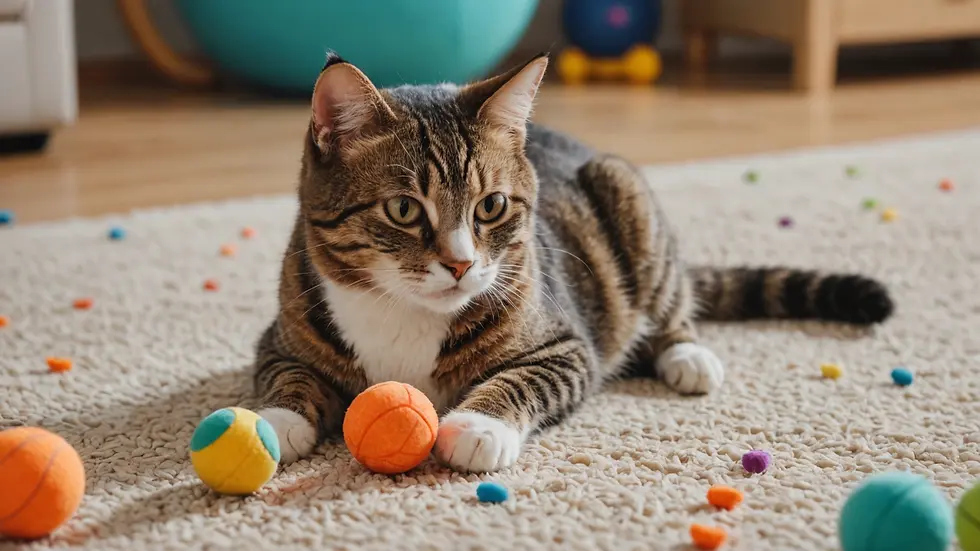What Are the Subtle Signs of Stress in Cats?
- Jyotiraj Borah
- Feb 7
- 4 min read
Every cat owner understands that each feline companion has its own unique personality. Cats may be famous for their independence, but they can also be quite sensitive. Recognizing subtle signs of stress in cats is crucial for their health and happiness. In this post, we’ll explore the various signs of stress, how to spot them, and what you can do to support your furry friend.
Understanding Stress in Cats
Cats are creatures of habit and tend to thrive in predictable environments. Stress can surface due to multiple factors, such as alterations in their surroundings, interactions with other pets, or changes in their daily routines. While some signs of stress are readily noticeable, many others can be quite subtle. Hence, it's essential for cat owners to be observant.
Stress can lead to both physical and behavioral changes. Identifying these changes promptly is key to helping your cat feel better.
Signs of Stress to Look For
1. Changes in Grooming Habits
One of the most revealing signs of stress is a change in grooming habits. Cats are usually meticulous groomers, but a stressed cat may either over-groom, resulting in bald patches or skin irritations, or neglect grooming, leading to a dirty, unkempt coat.
For instance, a study found that 30% of stressed cats exhibit signs of over-grooming. Pay close attention to your cat’s grooming behavior. If you see sudden changes, it’s time to assess their surroundings and identify possible stressors.

2. Altered Eating Patterns
Another indication of stress can be observed in a cat’s eating habits. Some cats may lose their appetite, while others might eat excessively when stressed. For example, if your normally enthusiastic eater suddenly shows little interest in food, or if your shy cat starts devouring everything in sight, it's vital to investigate these changes.
Studies indicate that up to 25% of cats may experience changes in appetite due to stress. Monitor your cat closely; sudden changes may signal stress or health issues that need addressing.
3. Excessive Hiding
Hiding is a natural cat behavior, but if your cat suddenly starts hiding more frequently, it may indicate stress or anxiety. Look for habits like spending excessive time under furniture or in closets.
Consider whether there have been recent changes in the household, such as new pets or loud noises, that could contribute to this behavior.

4. Changes in Litter Box Behavior
Stress can also alter a cat's litter box habits. You might notice behaviors like urinating outside the litter box or urinating more frequently. These changes could signal that your cat feels stressed or uncomfortable.
It is important to pay close attention to litter box usage, as inconsistencies may indicate stress or other health concerns requiring a veterinarian's consultation.
5. Increased Vocalization
While some cats are naturally chatty, a sudden spike in vocalization can signal stress. A cat may vocalize more when feeling threatened or uncomfortable. Pay attention to changes in the pitch or frequency of your cat's meows; these can reveal their emotional state.
If a typically quiet cat becomes more vocal, consider any recent changes in their environment or routine that might be causing this response.
6. Aggressive Behavior
Stress can sometimes lead to unexpected aggression. A calm cat might become irritable in stressful situations. Behavioral changes can include hissing, swatting, or biting.
If your cat’s temperament changes, take time to evaluate their environment and the interactions with other pets or family members.
7. Destructive Behavior
When feeling stressed, some cats may become destructive, scratching furniture or knocking over objects. This behavior often serves as an outlet for their anxiety. Providing scratching posts and engaging toys can help redirect their energy to more positive activities.
In fact, research shows that offering mental and physical stimulation can reduce stress-related behavior in up to 40% of cats. If destructive behaviors persist, consider reviewing your cat’s living conditions and identifying any stressors.

Responding to Your Cat's Stress
Recognizing the signs of stress is just the first step. After identifying that your cat is stressed, it's important to take action. Here are some ways to respond:
Create a Safe Space
Make sure your cat has a safe space where it can retreat to feel secure. This area should be quiet and comfortable, equipped with toys, blankets, and a litter box.
Maintain Routine
Cats thrive on routine. Keep feeding, playtime, and grooming schedules consistent. Avoid sudden changes to their daily habits, as gradual transitions are less stressful.
Playtime and Enrichment
Regular playtime and mental stimulation can help reduce stress. Use interactive toys and puzzle feeders to engage your cat. Daily play sessions allow cats to expend energy positively, which can be essential for stress reduction.
Consult a Veterinarian
If signs of stress persist or worsen, seek guidance from a veterinarian. They can help rule out underlying medical conditions and may recommend behavioral therapy or stress-reducing medications if needed.
Final Thoughts on Cat Stress
Identifying stress in cats can sometimes be challenging, especially when signs are subtle. As a caring cat owner, you can make a big difference in your pet's life by noticing changes in behavior, grooming, or vocalizations. By creating a supportive environment, maintaining routines, and engaging with your cat, you can help them feel safe and secure.
Recognizing and managing stress is vital for your cat's overall health. A little attention and effort can lead to a happier, healthier life for both you and your beloved pet. Be observant, respond thoughtfully, and cherish your time spent together.




Comentários